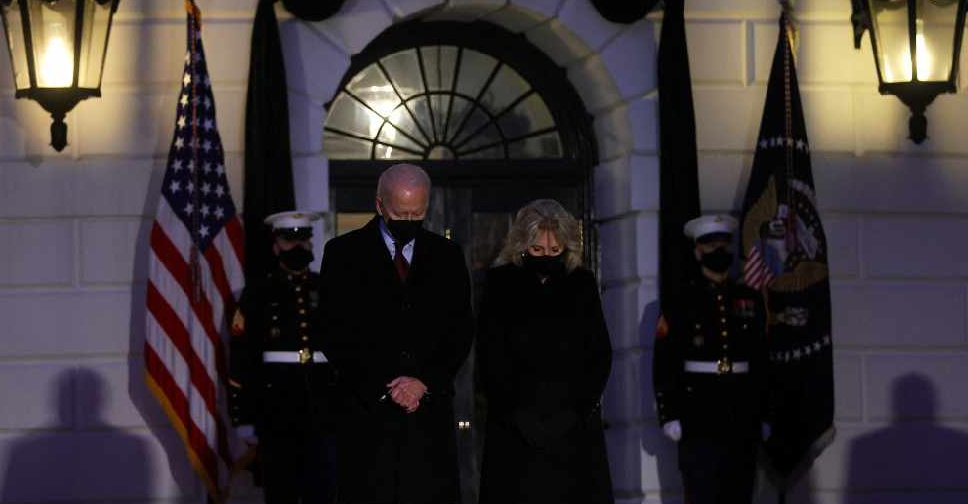
US President Joe Biden led Americans in observing a moment of silence on Monday to commemorate the grim milestone of more than 500,000 deaths from COVID-19.
"Today we mark a truly grim, heartbreaking milestone - 500,071 dead. That's more Americans who have died in one year in this pandemic than in World War I, World War II and the Vietnam War combined," Biden said in emotional remarks at the White House.
"But as we acknowledge the scale of this mass death in America, we remember each person and the life they lived. They’re people we knew."
Biden, Vice President Kamala Harris, first lady Jill Biden and second gentleman Doug Emhoff marked a moment of silence around 6:15 pm (2315 GMT) outdoors at the White House after the president's remarks, bowing their heads somberly.
Five hundred lit candles lined the White House steps to commemorate the dead and a military band played a soaring rendition of Amazing Grace.
Biden ordered that all flags on federal properties and military facilities be lowered to half-staff until Friday at sunset to commemorate the dead.
The president called on Americans to remain vigilant in fighting the pandemic by continuing to wear masks, observe social distancing and receive vaccinations when it is their turn.
"We must end the politics and misinformation that has divided families, communities and the country, and has cost too many lives already. It's not Democrats and Republicans who are dying from the virus. It's our fellow Americans," Biden said.
"We have to fight this together as one people, as the United States of America."
About 19 per cent of total global coronavirus deaths have occurred in the United States, an outsized figure given that the nation accounts for just 4 per cent of the world’s population.
The country has the highest overall death figure, reflecting the lack of a unified, national response last year, when the administration of former President Donald Trump mostly left states to their own devices in tackling the greatest public health crisis in a century.
Biden, a Democrat, took office on January 20 after defeating Trump, a Republican, in the 2020 presidential election, in part by arguing he would do a better job of addressing the pandemic.
Trump downplayed the pandemic in its early stages and repeatedly predicted rosier numbers about the expected death toll in the United States than came to fruition.



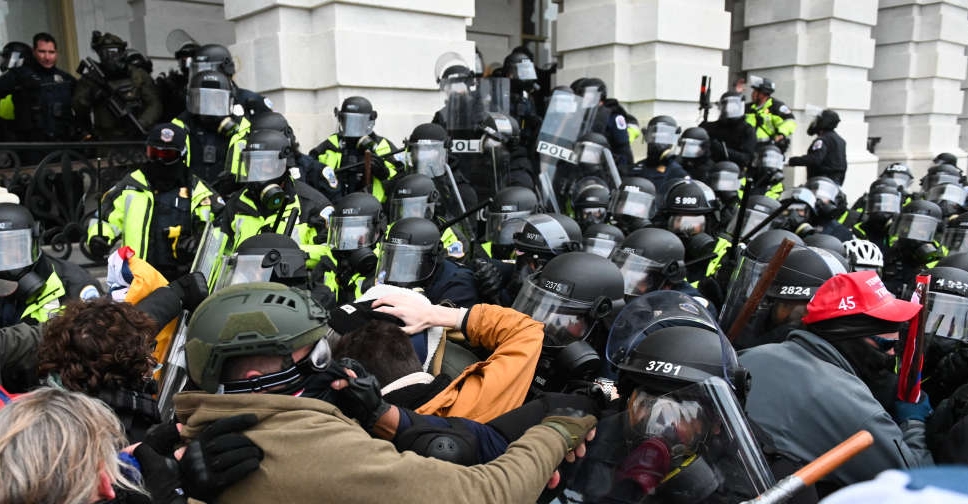 US Justice report finds Trump engaged in 'criminal effort' to overturn 2020 election
US Justice report finds Trump engaged in 'criminal effort' to overturn 2020 election
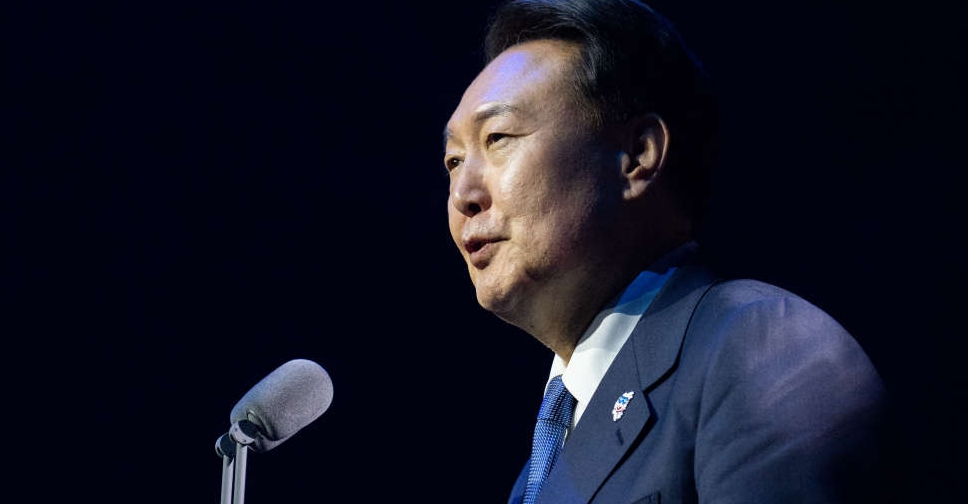 Impeachment trial of South Korea's Yoon adjourned
Impeachment trial of South Korea's Yoon adjourned
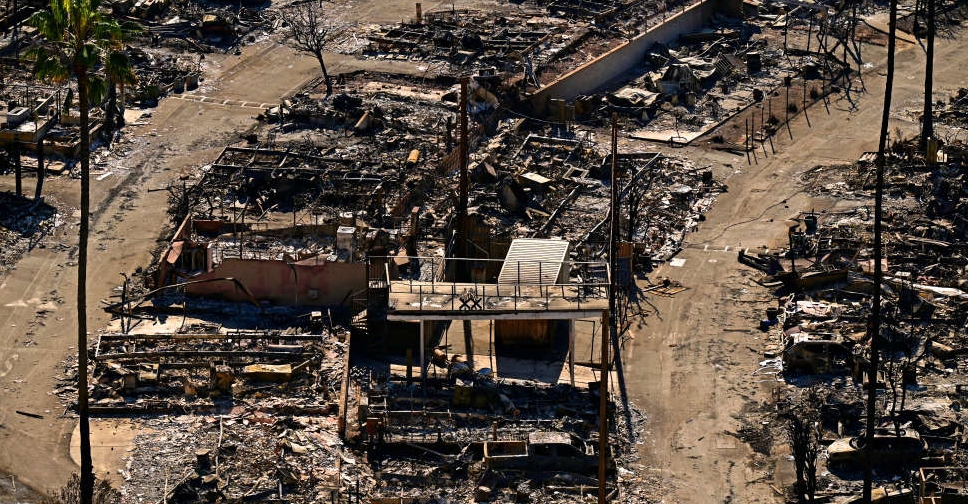 Los Angeles utility sued for Palisades Fire water shortage
Los Angeles utility sued for Palisades Fire water shortage
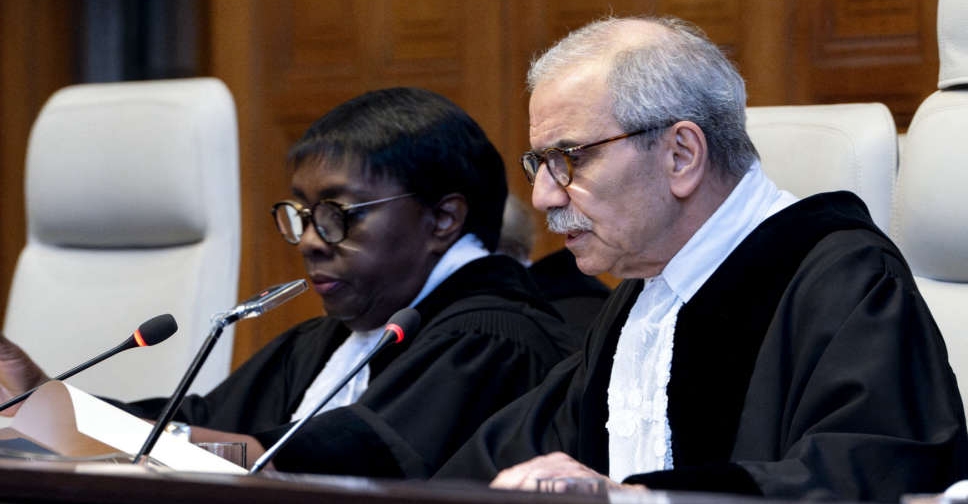 Lebanon's Nawaf Salam to be designated PM
Lebanon's Nawaf Salam to be designated PM
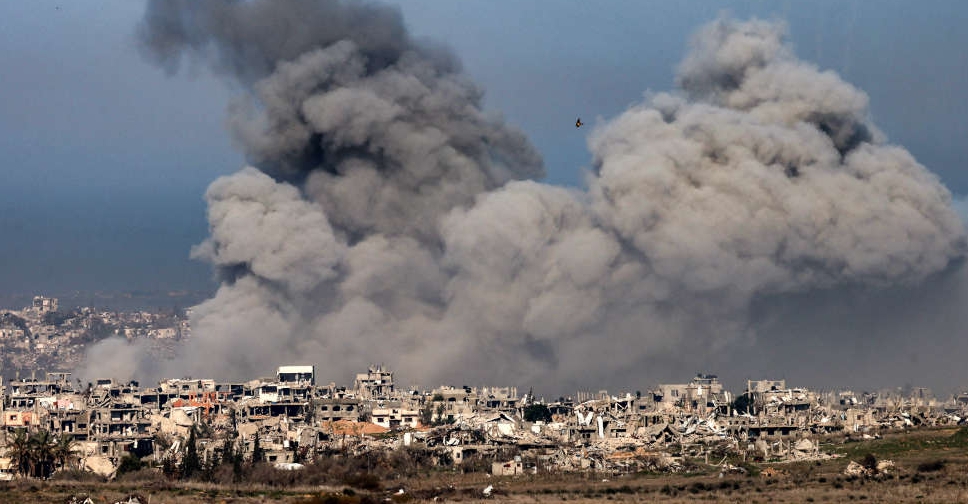 Qatar hands Israel, Hamas 'final' draft of Gaza ceasefire deal
Qatar hands Israel, Hamas 'final' draft of Gaza ceasefire deal







